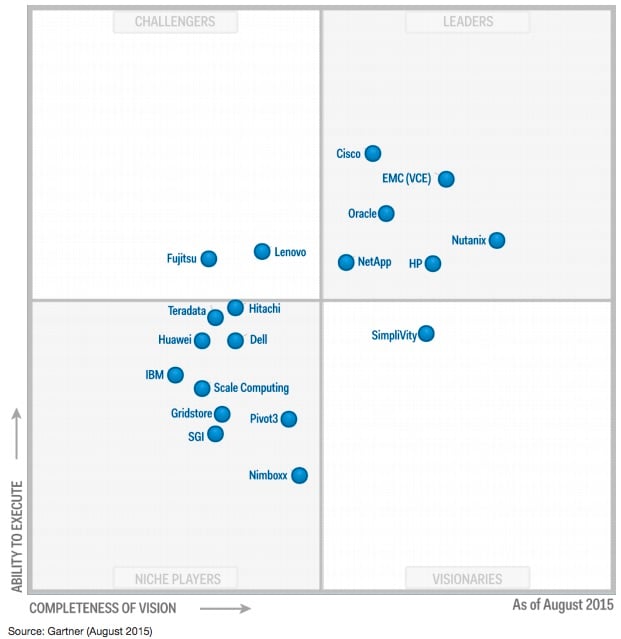We’re used to think at storage like some monolithic entities, black, inaccessible (only support can), and managed by strong specialists.
The Tintri concept is somehow different.
 Let’s start saying that this is a virtual-only storage: don’t even think at it for physical purposes, it will lose all its charm.
Let’s start saying that this is a virtual-only storage: don’t even think at it for physical purposes, it will lose all its charm.
I’ll talk about the hybrid solution, T880 is the top device among Tintri’s hybrids.
 What’s different from others: the magic inside the (white – posh!) box. Actually, that’s simply a mix of SAS and SSD disks, so? So, the software is the difference.
What’s different from others: the magic inside the (white – posh!) box. Actually, that’s simply a mix of SAS and SSD disks, so? So, the software is the difference.
Some of you could say “Well, so why have a complete box instead of simply a software”. Yes, it makes sense. The reason why they decided to join HW and SW is “compliance”. Offering their own mix of HW with their SW let them say exactly which the performances will be, that there are no conflicts inside and, last but not least, a single point of support.
Let’s have a look at the benefits.
I think that the main benefit is performance. Anyone used to traditional storage will be amazed. Latencies and IOPS are something that traditional storage can’t afford.
Setup – to set a box up in a rack will take no more than 30 minutes, its console configuration 5, its remote configuration 10. In less than 1 hour you’ll have your new datastore up&running.
Dedup and compression – somehow variable between 1,5 and 2 in practical world, and it is performed in-line with no loss of performances.
QoS – one of the reasons for the title. Tintri allows QoS per single VM, it means that if you need just a VM inside a group to be fast, is enough to work directly on it, should you decide that speed is no more necessary, again enough move the QoS crossbar. This also means having VIP customer and new marketing tools, if you’re a CSP like the company I work for.

TGC, a.k.a. Tintri Global Centre, an orchestrator of all the features of all the VMstore installed. It’s not only a single panel to control the storage, but an instrument for better global analytics, an overview on all the VMs and global performances of the whole system.
Storage management is unbelievably easier, all the time needed to manage LUNs and inflexible blocks can be allocated elsewhere.
Footprint – a T880 fills 4U, it’s power consumption is about like an hairdryer, need for cooling more or less as a couple of blades.
Now the unpopular items. If you have less than 80% virtualized, it’s not the best choice. If your budget is quite limited, you should look at traditional, even if slower, products. If you need performances, don’t have budget limits and your environment is pretty stable, look at all-flash arrays.
Finally, I’d like to spend some words for the quality of support. During our P.O.C. (which I strongly advice to ask for) we had an issue with a disk, of course the system wasn’t new. I was impressed by the time elapsed from ticket being opened, to call and web-ex received, and solution.
All in a flash, as the name “Tintri” in old Irish stands for. Good job guys, and “keep it simple”!












 So, did we really need a new blog and a new blogger? I can’t say, I hope to give a little bit of my professionality to our large virtual community.
So, did we really need a new blog and a new blogger? I can’t say, I hope to give a little bit of my professionality to our large virtual community.